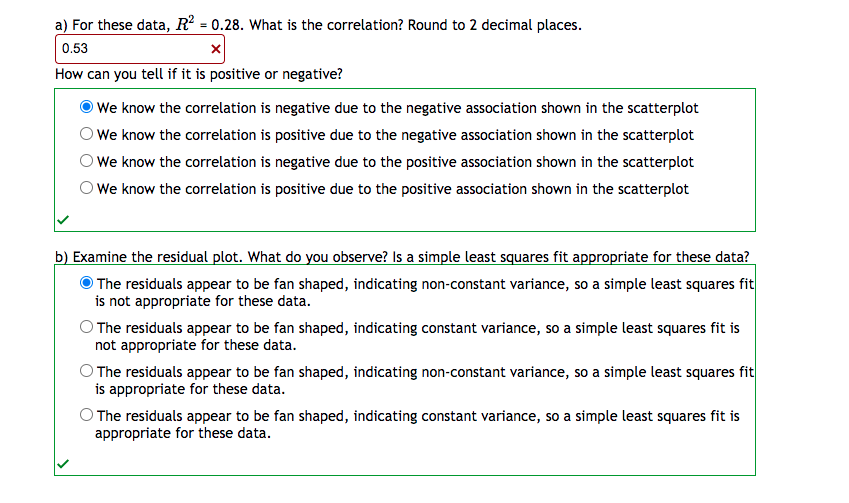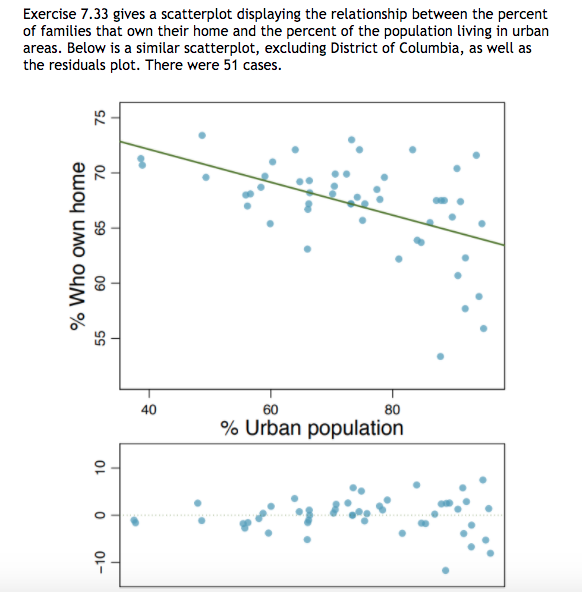a) For these data, R² = 0.28. What is the correlation? Round to 2 decimal places. 0.53 How can you tell if it is positive or negative? O We know the correlation is negative due to the negative association shown in the scatterplot We know the correlation is positive due to the negative association shown in the scatterplot We know the correlation is negative due to the positive association shown in the scatterplot O We know the correlation is positive due to the positive association shown in the scatterplot b) Examine the residual plot. What do you observe? Is a simple least squares fit appropriate for these data? O The residuals appear to be fan shaped, indicating non-constant variance, so a simple least squares fit is not appropriate for these data. O The residuals appear to be fan shaped, indicating constant variance, so a simple least squares fit is not appropriate for these data. O The residuals appear to be fan shaped, indicating non-constant variance, so a simple least squares fit is appropriate for these data. O The residuals appear to be fan shaped, indicating constant variance, so a simple least squares fit is appropriate for these data.
Correlation
Correlation defines a relationship between two independent variables. It tells the degree to which variables move in relation to each other. When two sets of data are related to each other, there is a correlation between them.
Linear Correlation
A correlation is used to determine the relationships between numerical and categorical variables. In other words, it is an indicator of how things are connected to one another. The correlation analysis is the study of how variables are related.
Regression Analysis
Regression analysis is a statistical method in which it estimates the relationship between a dependent variable and one or more independent variable. In simple terms dependent variable is called as outcome variable and independent variable is called as predictors. Regression analysis is one of the methods to find the trends in data. The independent variable used in Regression analysis is named Predictor variable. It offers data of an associated dependent variable regarding a particular outcome.


Trending now
This is a popular solution!
Step by step
Solved in 3 steps






